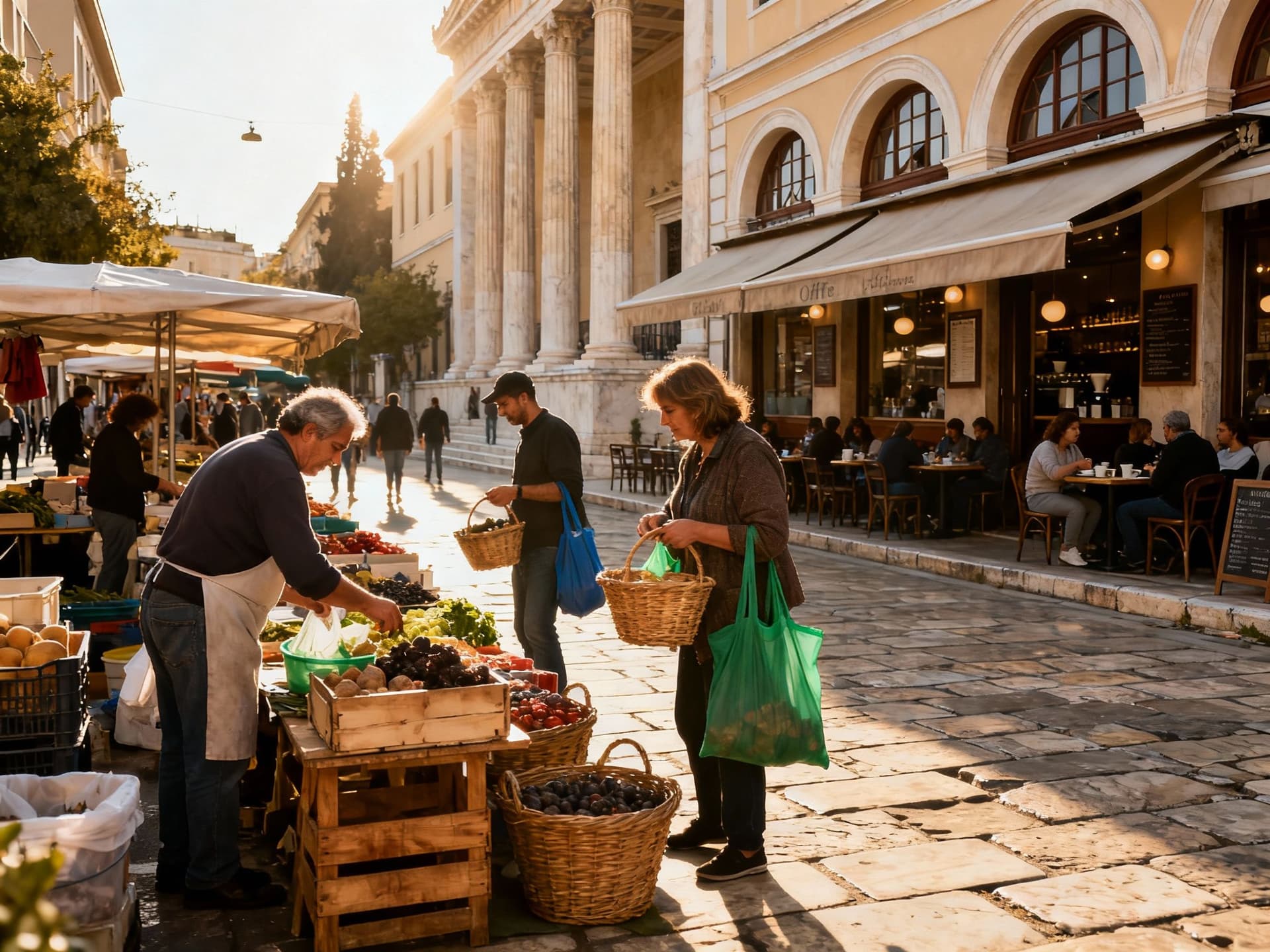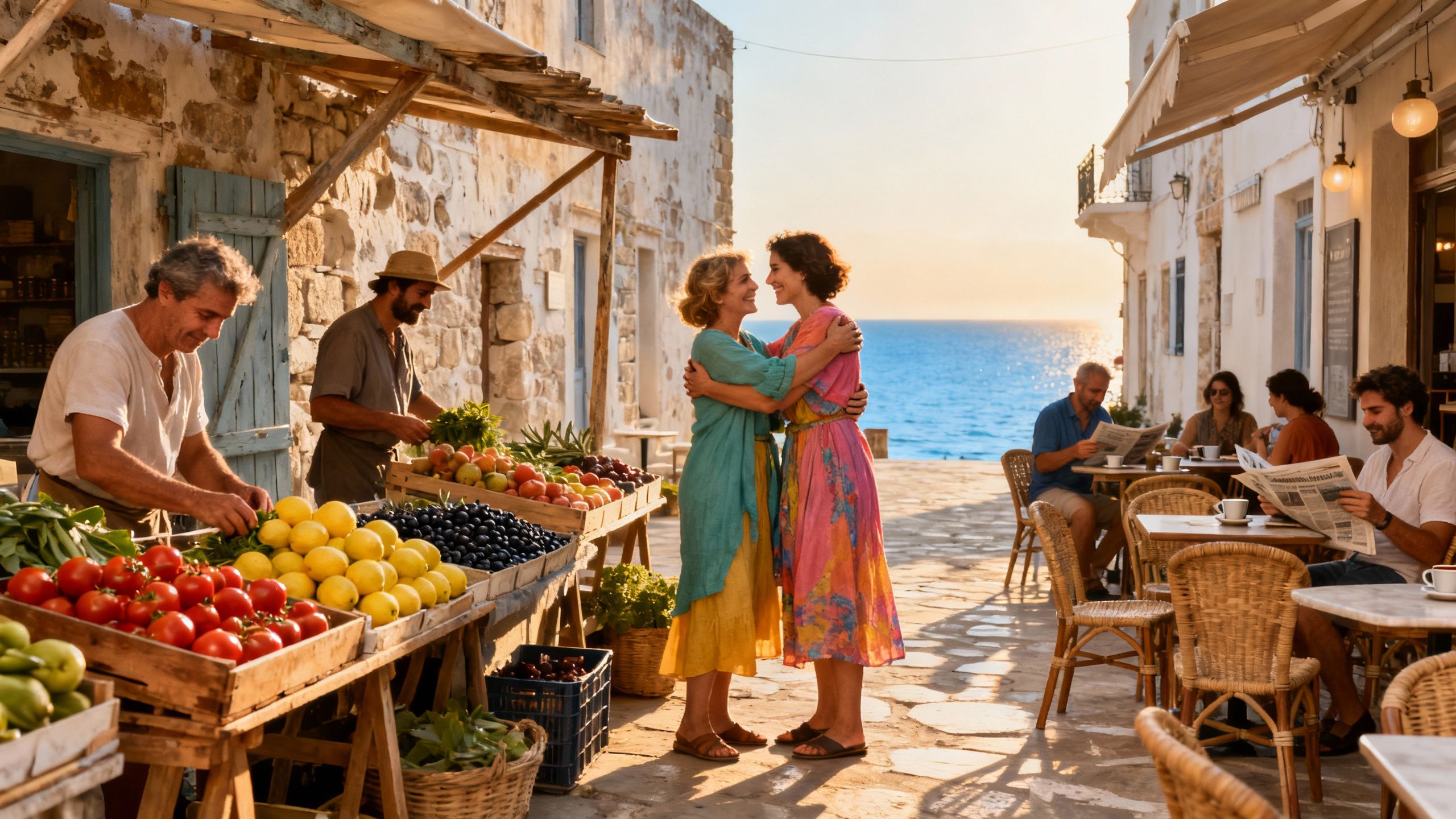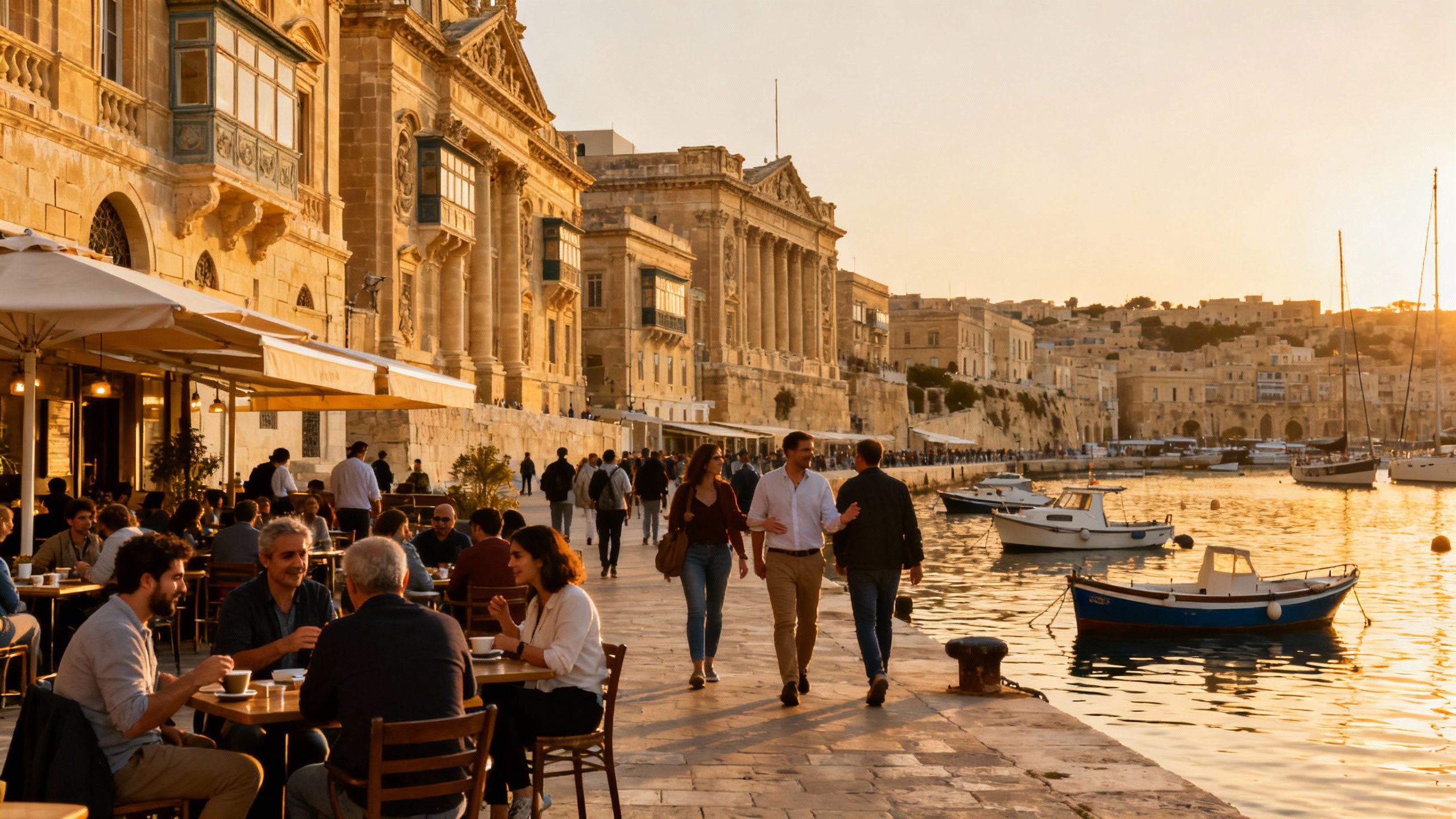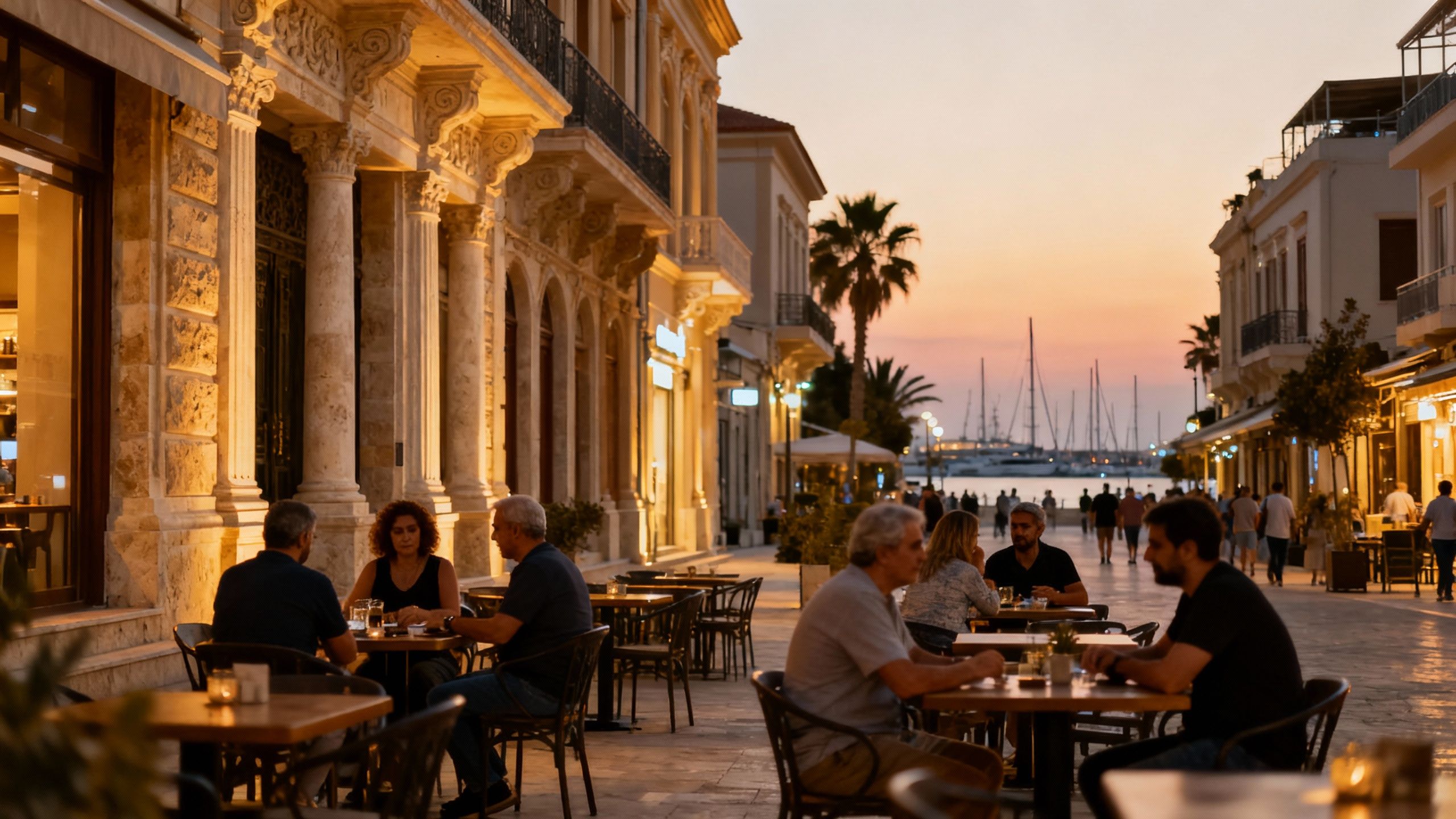Greece Risk Playbook: Insurance, Tax Breaks & Lifestyle
A lifestyle-led look at insurance in Greece: how seismic, fire and tax changes reshape protection for international buyers, with actionable steps and local sources.
Imagine waking each morning to the bell of a neighborhood kafeneio in Plaka, the sea-salt air off Hydra at dusk, or a quiet terrace in Kifisia where bougainvillea softens a stone façade. In Greece the senses come first: limestone light, tavernas serving grilled octopus, children racing through squares at siesta’s end. Yet the serenity masks practical trade-offs — seismic risk, summer wildfires, seasonal markets — that shape how you protect a home here. This piece threads those rhythms into the insurance and protection decisions every international buyer must make.
Living the Greek life — texture, streets and seasons

Greece is lived outdoors. In Athens you drift from espresso at Syntagma’s outer edges to evening meze in Exarchia or Kolonaki; on the islands life follows light and tide, from early fish markets in Chania to late dinners on Naxos terraces. The climate and culture — long summers, mild winters, a strong village rhythm — determine where internationals settle: historic neighbourhoods near cultural institutions, quieter suburbs with private gardens, or island villas that prioritise sea access and shading.
Neighbourhood snapshots: where life changes the day
Plaka’s narrow lanes feel like a living museum; properties here are typically smaller, stone-built, and desirable for short-stay rental or a pied-à-terre. Kifisia offers tree-lined avenues, neoclassical villas and a suburban calm attractive for families. On Syros and Paros you find townhouses around lively plateias; on Evia and the Peloponnese there are larger plots with mature olive groves. Each area requires a different insurance posture — compact listed properties need cover for masonry and heritage risk, rural estates for fire and agricultural loss.
Food, markets and weekday rhythms
Saturday morning markets near Monastiraki or the central market in Thessaloniki are social institutions as much as supply chains. Dining is a communal architecture: shared plates, seasonal produce, villagers selling honey and cheese. For the buyer this matters — properties near markets deliver daily convenience and a vibrant social life, but also greater footfall and sometimes higher insurance needs for theft or third-party liability.
- Lifestyle highlights: authentic places and experiences
- Espresso on a Kifisia terrace; Plaka evening promenades; Sunday market at Varvakios in Athens; late-summer festivals in Mani; olive harvests in Laconia.
Making the move: practical considerations that preserve the life

Once the romance gives way to paperwork, sensible buyers translate lifestyle choices into risk strategy. Recent Greek policy changes — including tax incentives tied to insurance — shift the calculus. A property’s value, its location relative to fire-prone slopes or known seismic zones, and its construction type all determine what cover you seek and how an agency structures your acquisition.
Property types and the cover they demand
Stone-built neoclassical houses need cover for structural restoration costs and heritage elements; modern concrete villas require robust earthquake clauses and contents cover for bespoke finishes; rural estates need fire and crop/olive-tree insurance. Understand whether your policy distinguishes between repair-to-original and modern retrofit — a critical point when working with listed or traditionally finished homes.
Working with local experts who understand both life and law
An Athenian broker who knows neighborhood microclimates, a structural engineer conversant with Greek seismic codes, and an agency that can source candid comparative quotes are indispensable. Agencies that advise on appropriate sums insured and exclusions — for example wildfire or landslip clauses — become guardians of the lifestyle, not merely transactional intermediaries.
- Six integrated steps to protect both life and asset
- Commission a structural survey; obtain risk-zone mapping (seismic, flood, wildfire); request detailed quotes including natural catastrophe cover; agree sums insured reflective of reconstruction cost; secure proof of insurance for ENFIA tax discounts; register policy details with your notary and the local tax authority.
Insider knowledge — what expats wish they'd known earlier
Expats frequently recount two surprises: first, the uneven availability and cost of comprehensive natural-disaster cover; second, how swiftly small, local customs alter daily life — from waste collection schedules to the role of the community in mitigating risk. Insurance is not merely a contract here; it is a component of social resilience and access to official support after events.
Cultural integration and everyday protections
Making friends with neighbours, learning municipal emergency routes, and participating in local associations often yields practical benefits post-loss — coordinated clearing, trusted local contractors and quicker municipal assistance. Insurers may also look favourably on properties with maintained defensible spaces and approved wildfire mitigation measures.
Long-term stewardship: how lifestyle choices affect premiums
Premiums reflect more than geography: maintenance, choice of materials, and documented mitigation (sprinklers, shutters, secure wiring) reduce exposure. Insurers reward clarity: up-to-date restoration records, professional valuations and transparent tenancy histories. For a buyer seeking a generational home, this is where stewardship meets financial discipline.
- Red flags to spot during due diligence
- Uninsurable exclusions for named perils; unresolved land-stability reports; properties without professional electrical or seismic upgrades; informal additions (built without permit); lack of clear proof-of-ownership or outstanding municipal fines.
If a policy excludes wildfire or earthquake by default, negotiate a bespoke clause or consider reinsurer-backed products. When insurers retreat from a micro-region, a local agency’s market relationships become critical — they can often place risk with specialty carriers or propose layered solutions combining private cover and contingency lending.
A practical checklist before exchange
- 1) Obtain structural and hazard surveys; 2) Seek at least three written insurance offers with explicit exclusions; 3) Confirm eligibility for ENFIA insured-home tax relief and keep policy proofs; 4) Ensure the notary holds certified policy copies at closing; 5) Agree on emergency access arrangements with neighbours and property managers.
In Greece, preservation of lifestyle is inseparable from prudent protection. The island dusk or the Athenian morning that made you fall in love with the place depends on sensible, localised insurance choices and an agency that values provenance as much as price. Speak with specialists — local brokers, structural engineers and a Villa Curated‑style agent — to translate the romance into a resilient ownership model.
Former Copenhagen architect who relocated to Provence, offering relocation services, market analysis, and a curator’s eye for authentic regional design.


